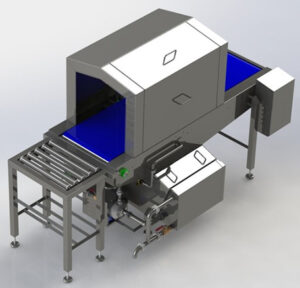Dustbin and Teacup Syndrome
Generally, Washing Systems within most production facilities (although critical to the business in terms of hygiene and product safety), are often seen as a necessary evil. Space allocation for this discipline is generally minimal and budgets for equipment are fairly tight. Add to this the fact that washing systems are not seen as having an added value in terms of production, Technical Managers and Hygiene managers have a hard time in justifying the cost of a new machine.
Based on this, it is no wonder that when some financial allocation is made, buyers will try and employ the equipment to wash a greater range of parts/containers as they can in order to maximize its utilisation.
Although there are some machines in the range that will clean several parts at a time (such as pan/utensil washers) with good effect, larger items are a different matter, as these can rely on specific types of equipment in order to produce efficient wash results. The larger machines are also more expensive, so this is where clients can sometimes request that the unit washes several different type of container in the same machine to increase the cost effectiveness of the purchase. This is what we call (or our sales manager calls) the dustbin and teacup syndrome.
What is meant by this term? If you had a machine to wash a dustbin, to also wash a teacup in the same machine would be restrictive on handling and efficiency. Yes you can handle several different types of container in the same machine, but only as long as handling and washing on each container has no effect on the efficiency of washing all of the others. For instance the jetting position to wash a bin and the pressures required would be completely unsuited for the washing of a tea cup. The jet positions would not necessarily be in the correct location for both, and the supporting or conveying system to contain the teacup, may be restrictive on the washing and handling of the bin.

Can these be efficiently washed in the same machine?
It is sometimes difficult to tell the client that they are wrong to try and attempt this, and the natural thing to do for many manufacturers would be to try and accommodate the requests. However this can result in the customer installing a machine that is a “jack of all trades” and does not clean any of the components efficiently, or is more expensive than installing 2 bespoke units due to the complexity required to arrange or adjust settings to suit all. This will only serve to disappoint the client, and more importantly their superiors, who have put up the funds for the equipment, and can also give the machine a bad name.
So next time that you are in the market for a machine, it may be a good idea, if a wide range of products are required to be cleaned, to consider the positives and negatives of washing in the same unit. Can some of the items be cleaned in an alternate method (ie hand washed if only a few units required)? Can we justify an additional wash system for the small components? What is the critical item to be washed and quantity? – all relevant points, that in theory should be questioned by the equipment supplier if they are ethical, as once a commitment is made to purchase, it must be fit for purpose.

 Effective Sanitizing
Effective Sanitizing